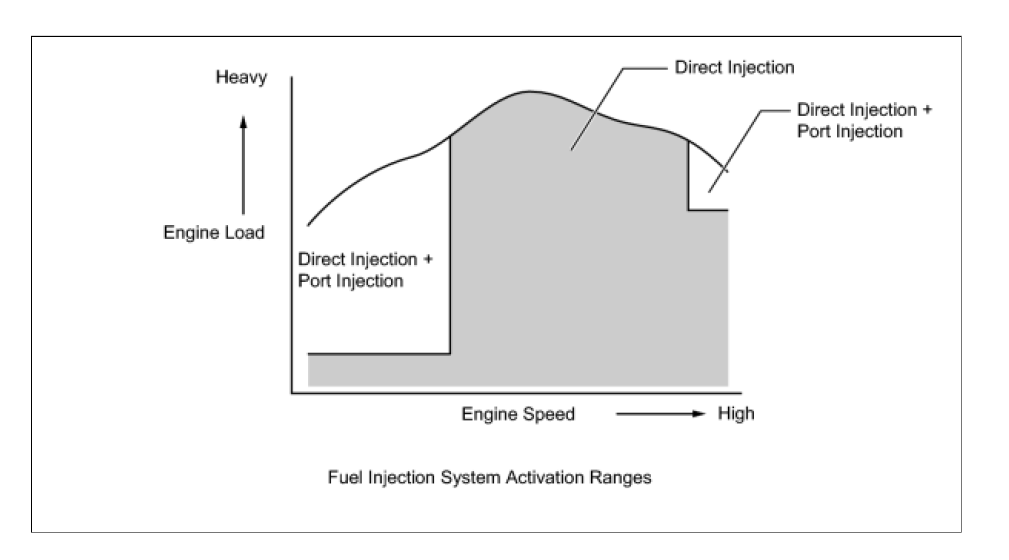Here's the chart in question:

At very high rpm the most important thing they are going to do is try and keep the exhaust manifold and especially the cat from overheating. By overheating, I mean exceeding some target temperature--most likely a max catalyst temperature of 900C. It was probably easiest and cheapest to spray the port injectors, after performing tests to verify that there wouldn't be some kind of bad side effect from this strategy.
You have to be careful not to think of a direct injector like it's just a port injector mounted spraying into the cylinder. It's not. It's more complicated than that, because of the shorter time for mixture formation and because fuel pressure is variable. Direct injection tuning/calibration on a modern engine is exponentially more complicated than fuel injection tuning back in the days of say the 2JZ.
Generally speaking a port injection system relies on a constant pressure differential between the fuel and the intake manifold. On the early multi-port injectors, it was about 2.5 bar. Then it went to 3, and 4, maybe up to 5 bar. This pressure differential could be controlled mostly mechanically by a fuel pressure regulator on/near the rail, as in a conventional return fuel system like Mark IV Supra 2JZ engine. For discussion's sake, fuel is solely controlled through injector "ON" time on a 2JZ.
Fuel could also be controlled through an in-tank regulator with injector pulsewidth corrections, as in a conventional returnless system. In both situations, the fuel pressure isn't a major determinent of injector mass flow except in the sense that the injectors run right around whatever base pressure the system was designed for.
With direct injection it's different, in part because you have shorter crank angle duration for mixture formation. Instead of having many crank angle degrees for the fuel to vaporize on the back of a valve (like typical closed-valve port injection), you have a narrow crank angle window. Maximum injector pulsewidth is therefore limited. To increase fuel delivery and appropriately size the injectors, you may have to increase fuel pressure. Since it's a mechanical fuel pump, there could be significant energy consumption involved in that.
The calibration engineers may have decided that they didn't want to crank up the fuel pressure at very high rpm because of energy losses. It could have been easier to just spray the port injectors and then verify that doing this doesn't cause some other kind of problem.
What I'm trying to say here is, it's a bit premature to call the direct injectors "maxed out."